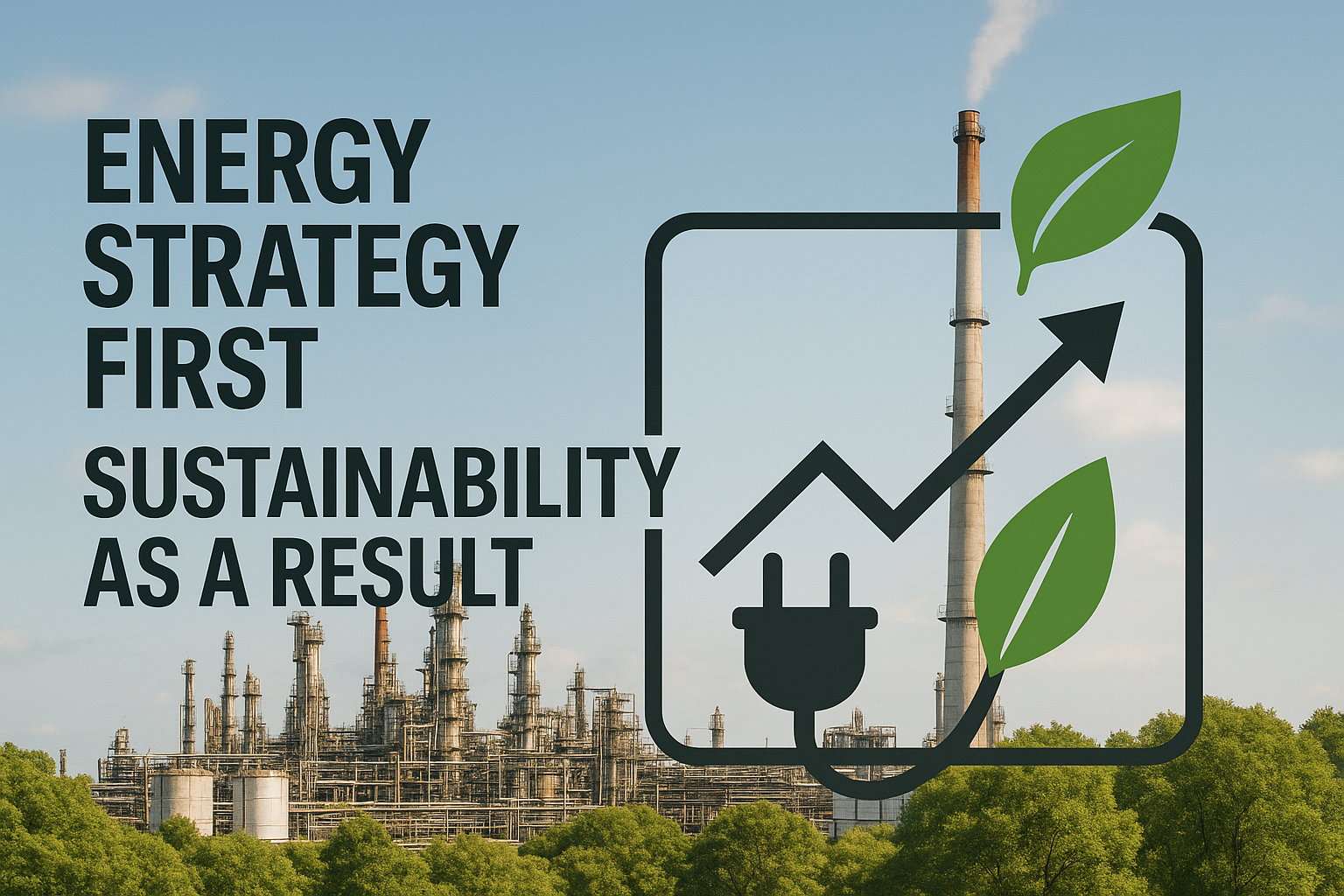Every hour of unplanned downtime in oil and gas can erase revenue fast; real-time analytics projects have already prevented millions in losses for producers and pipeline operators. Energy itself ranks among the largest operating expenses, routinely second only to feedstock costs, and its price volatility amplifies the hit when equipment trips or processes drift.
You face a dual mandate: cut costs while meeting tightening emissions targets. The global energy system became about 7 percent more efficient in recent years, yet total demand kept fossil-fuel use and CO₂ at record highs. Closing that gap demands data-driven action.
Proven programs show that making energy use visible in real time, linking process conditions to consumption, and automating key set-points with advanced optimization can trim fuel and power bills, curb emissions, and boost margins; all without major capital outlays.
Understanding the Challenges in Energy Management
Power and fuel sit at the center of every well, pipeline, and processing unit you operate, yet maintaining efficiency is tougher than ever. Processes are distributed across remote sites, feed quality swings hourly, and much of the infrastructure was installed long before real-time optimization was possible. While efficiency gains of 7% represent progress, total consumption and CO₂ emissions still hit record highs, showing that improvements are being outpaced by rising demand.
Policy shifts toward “whole-system” planning add another layer of complexity, pushing you to integrate low-carbon technologies without compromising reliability. Most long-term scenarios see oil demand topping out before 2030, which raises the bar on unit-level performance.
Many decisions are still guided by operator intuition and monthly utility bills rather than live data, leaving abnormal consumption and downtime costs unchecked. These constraints underscore why data-driven, integrated strategies are now essential for sustained optimization.
Strategies to Optimize Energy Management in Oil & Gas Operations
Effective energy management in oil and gas operations requires a comprehensive approach that evolves from awareness to action. By establishing a foundation of real-time monitoring, organizations gain immediate visibility into consumption patterns. This initial insight naturally progresses to sophisticated analysis that correlates process variables with energy performance.
The journey culminates with intelligent automation through closed-loop AI Optimization, which continuously maintains optimal efficiency. This integrated methodology transforms operational data into substantial cost savings and emissions reductions while maintaining strict adherence to safety protocols and production requirements.
1. Make Energy Use Visible in Real Time
For many assets, the first time you learn about a power spike is when the monthly utility bill arrives. By then, any abnormal steam draw or compressor surge is ancient history. Connecting field meters, SCADA streams, and time-series historians changes that dynamic entirely.
Real-time dashboards fed by smart power meters, fuel-gas flowmeters, and IoT sensors flag anomalies within minutes, not weeks, letting you act before inefficiency triggers a shutdown.
Streaming telemetry into centralized operations centers can catch abnormal kW or MMBtu patterns early, reducing both waste and unplanned outages linked to equipment stress. Remote monitoring of wells, pipelines, and terminals extends that protection to hard-to-reach assets.
To get started:
- Inventory every major load—compressors, furnaces, pumps—and verify each has a calibrated meter with a clean data tag
- Route those signals to a historian and apply basic quality checks
- Build mode-aware KPI dashboards that compare kWh, fuel-gas, and steam rates against rolling baselines
- Train operators to treat power alarms like any other process alarm
- Use edge buffering so lost connectivity never hides consumption spikes
Establishing this energy monitoring foundation is essential before you can effectively correlate operational data with the process conditions that drive consumption patterns. Without visibility, optimization remains impossible.
2. Link Process Conditions to Energy Performance
Power consumption mirrors how the plant operates. Minor tweaks, distillation pressure, compressor recycle set-points, furnace excess oxygen, shift fuel or electricity draw by double-digit percentages. Uncovering those linkages starts with disciplined data analysis.
The Energy Institute and Ipieca recommend pairing KPIs with energy-influencing variables such as feed quality, throughput, and ambient temperature. Multivariate regressions and correlation plots highlight which variables matter most.
At the equipment level, heat-integration studies often reveal that simply lowering a column’s operating pressure trims furnace duty without hurting yield, an insight frequently identified through process simulation and thermodynamic analysis.
Cross-functional reviews turn these findings into action. Process engineers adjust set-points, maintenance teams target fouled exchangers, and operations teams watch the dashboard to confirm the expected drop in kWh or MMBtu per barrel. However, manual interventions can only go so far; sustaining optimal set-points around the clock calls for automation.
3. Automate Energy-Intensive Set-Points with Closed-Loop AI
AI optimization (AIO) solutions autonomously write optimal set-points back to the distributed control system (DCS) every few minutes, continuously steering the plant toward lower consumption while honoring quality, throughput, and safety limits.
Deep learning models map complex, nonlinear relationships across thousands of tags, then reinforcement learning (RL) policies decide, in real-time, how to trim furnace fuel, balance compressor loads, or fine-tune column pressure.
Target high-impact levers first: furnace air-fuel ratios, distillation reflux and pressure, and compressor header pressures. Implementation follows a proven sequence that builds operator confidence while minimizing risk:
- Start with units that have clear KPIs and reliable instrumentation
- Test models offline, switch to advisory mode, then close the loop once operators trust the recommendations
- Provide training through simulators that mirror live plant behavior
- Maintain performance with ongoing model monitoring and periodic retraining to handle feed or equipment changes
By automating the most power-intensive decisions, you lock in the improvements uncovered in the first two strategies and free your team to focus on higher-value tasks instead of manual tuning.
Optimize Energy Use to Transform Your Oil and Gas Operations with Imubit
Efficiency in oil and gas rarely demands new equipment—it demands smarter use of the ones already in place. Closed-loop AI tools ingest live historian and sensor data, learn the complex relationships between throughput, quality, and fuel, then adjust set-points in real time. By eliminating the conservative cushions operators rely on, these systems cut fuel and power while keeping production targets intact.
Plants that have activated closed-loop optimization report measurable efficiency improvements within weeks and payback in under a year. Because the model writes directly to the distributed control system (DCS), gains are locked in 24/7—even as feed quality, ambient temperature, or equipment health shift.
For oil and gas industry leaders pursuing lower operating costs and emissions, Imubit’s Closed Loop AI Optimization solution offers a proven approach grounded in your plant-specific operations. The technology delivers measurable improvements in energy performance by continuously learning from your operational data. Get a complimentary Plant AIO assessment to see how quickly optimized set-points can move your sustainability metrics in the right direction.




